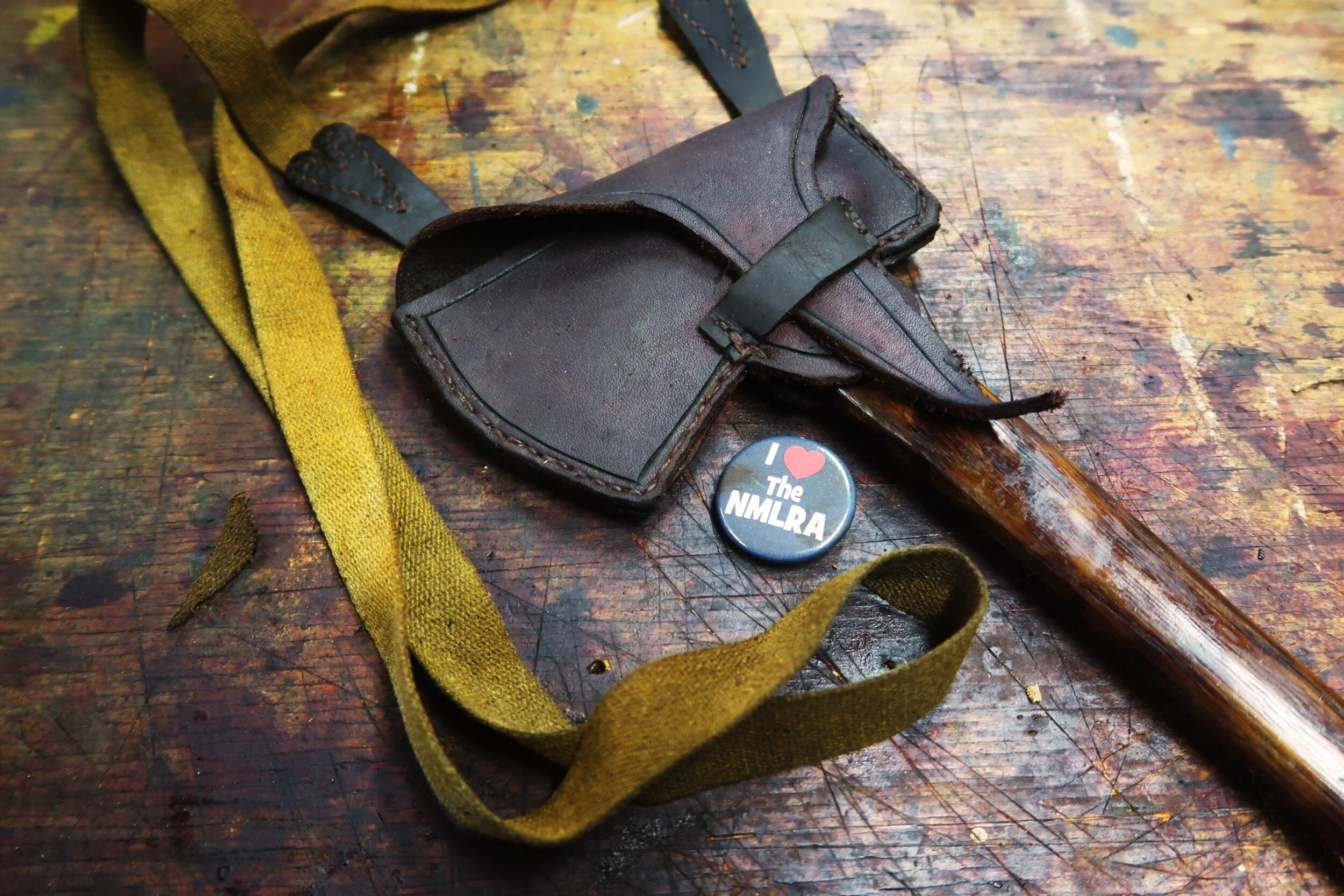This statement has been shared from the Honourable Company of Horners Facebook Page.
The Jeweler's Saw | Gun Making Tools of the 18th Century and Today | Muzzle Blasts
When I was a young man, I apprenticed under a master tool and die maker. In the first two years I worked with him I seldom saw him use a milling machine, he did it all with a file. Being young and headstrong I would often complain, but his reply was always the same: before you can use the mill, you must master the file.
Unboxing 2 Flintlock Longrifles from Mike Miller and Malchiah Pifer
Frank House on Making a Chasing Hammer
Frank House originally shared this post on the CLA facebook page
Alright Engravers,
Time to think about chasing hammers!
The idea here is to use a very light hammer (mine weighs in at 2.9 oz) with a thin flexible handle as the lighter and faster taps will not only yield a finer and more consistent cut, your gravers will hold out far longer with less breakage of your tip. (More on that later)
To get started, I use machinable brass
and have posted at least one source for 1" stock (photo)
Machine the head to the dimensions provided in the drawing and bore a 3/8" (.375) eye for the handle and then, using a tapered reamer relieve the eye slightly from both the top and bottom so that the handle will "swage" itself into place with a wooden wedge.
The handle dimensions are 1" diameter at the butt or grip end, .300" at the neck or smallest portion and
.400" at the portion that goes through the eye with a slight taper to .375" or 3/8".
I have as well listed a chasing hammer along with the contact info (photo) from Rio Grande that will suffice.
Next up, shaping the graver and sharpening!
Upwards and onwards!
3 Moccassin Patterns and Tutorials
These patterns were shared by Wil Crouch in the “Buckskins & Muzzleloaders, The Life & Times Of The Mountain Men, 1760-1840” Facebook Group. Try making a pair and let us know how it goes!
Preserving the "Journal of Historical Armsmaking Technology" Book Series
Unboxing a Jim Chambers Flintlock Kit with Blackpowder TV
Black Powder TV unboxes a muzzleloader kit from our friends at Jim Chambers Flintlocks LTD! Check out the video today
2020 Gunmakers Hall Incentive Rifles by Mike Miller and Malchiah Pifer
Strap and Flap attachment for your leather pouch | Leatherworking with Jeff Luke
Fringed Edge Binding | Leatherworking with Jeff Luke
Greg Murry overcame adversity to become the artist he is today | Excerpt
How to make a sheath for your camp or belt axe | Late 18th Century
Announcing the Mike Brooks Kibler Longrifle Kit Assembly Class at the NMLRA Education Center
The Liberty Cap in the Art of the U.S. Capitol
Bill Raby finishes his Lancaster Rifle Build Tutorial Series
Bill is building a 50 caliber Lancaster, Pennsylvania style flintlock rifle based on one made by Isaac Haines around 1770.
This is a good example of one used around the time of the Revolutionary War.
We’d like to thank Bill for sharing the NMLRA during his videos! builders like Bill are a major part of what we all love to do here at the NMLRA.
➽ ➽ Support this content - nmlra.org/store/membership ➽ ➽
"It's Important that somebody remembers" | The Story of the Liberty Cap | Muzzle Blasts Archives
Of all of the interesting headgear associated with the American Revolution, one of the simplest forms, so simple in fact that no regular Continental units ever adopted it as an official hat, was the "Liberty Cap." During the Revolution this was generally a wool or cotton cap with the word Liberty or Liberty or Death embroidered across its front in an opposing color. A few battalion infantry and numerous light infantry units wore miters with this legend emblazoned across their fronts (Congress being another legend), light infantry miters sometimes saying Liberty or with a skull and cross bones replacing Death, the words requiring more room than the shorter light infantry miter could afford, the skull and crossbones being more easily squeezed into the space.


























